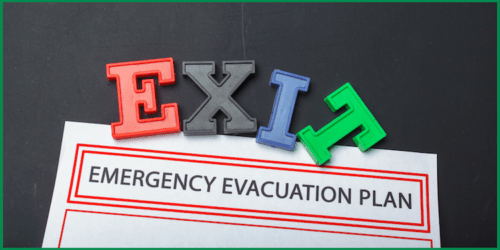Ensuring patient safety in hospitals is an absolute necessity that affects every individual seeking medical care.
Patient safety is paramount as it directly impacts patient outcomes, satisfaction, and healthcare costs.
Medical errors are responsible for over 250,000 deaths annually in the United States alone; a collaborative effort from healthcare professionals, hospital administrators, policymakers, and patients could have avoided many of these.
This article will explore practical ways to protect patients in the hospital environment because inadequate safety measures can lead to adverse events, infections, medication errors, and other preventable incidents.
Table of Contents
- Education and Training
- Technology Support
- Effective Communication
- Physical Environment
1) Education and Training
One of the most significant ways to enhance patient safety is through rigorous education and training of healthcare providers.
- Continuous Education and Training: Regular training and education for healthcare staff are necessary to keep them updated on the latest safety practices and protocols. The education should include emergency response training and simulation exercises to enhance preparedness for critical situations.
- Reporting and Learning from Errors: Encouraging a blame-free reporting culture can help identify system weaknesses and opportunities for improvement. Analyzing errors and near-misses enables hospitals to learn from mistakes and implement preventive measures.
2) Effective Communication
Patient safety hinges on effective communication. Hospitals must communicate with patients and their families regarding their care and treatment, including potential risks or side effects.
- Team-Based Approach: Effective communication and collaboration among healthcare teams are vital to ensure patient safety. Hospitals should encourage open communication, where all team members feel empowered to voice concerns and suggestions.
- Patient identification: Ensuring accurate patient identification is essential to prevent medical errors and provide appropriate care. Patient identification wristbands and electronic verification systems can aid in this process.
- Hospital and Patient Relation: Equally important is the hospital’s ability to communicate effectively with patients, especially when explaining complex medical procedures or diagnoses. Patients should feel at ease asking questions and raising concerns about their care.
3) Technology Support
Technology is another critical aspect of patient safety. Hospitals must invest in advanced medical equipment and technology to reduce errors and improve patient outcomes.
- Electronic Health records (EHRs): EHRs centralize patient information, reducing the risk of misplacing or losing critical data. They enable quick access to patient history, medications, and allergies, ensuring healthcare providers have a complete picture of the patient’s health.
- Clinical Decision Support Systems (CDSS): CDSS assists healthcare professionals in making evidence-based decisions by providing real-time clinical guidelines and alerts for potential drug interactions or allergies.
- Patient Monitoring Systems: Advanced monitoring systems can track patients’ vital signs continuously, alerting healthcare teams to any abnormalities or deterioration in real-time and allowing for swift interventions.
4) Physical Environment
A hospital’s physical environment plays a crucial role in ensuring patient safety. Hospitals need a design that promotes safety and reduces the risk of infections.
- Hospital General Safety: Workplace safety measures include appropriate lighting, proper ventilation systems, and good housekeeping. Hospitals must also have procedures to prevent falls and other accidents.
- Infection Control: Hospitals must have stringent infection control protocols to prevent hospital-acquired infections. Hand hygiene compliance, proper sterilization techniques, and isolation precautions are crucial in reducing the spread of diseases.
Bottomline
Hospital patient safety is a complex issue requiring a comprehensive and unwavering approach.
By fostering a safety culture, investing in education and training, physical infrastructure, effective communication, and leveraging technological advancements, hospitals can ensure that the quality of care received by patients is of the highest standard while minimizing the risk of harm.
Continuously striving for excellence in patient safety is an ethical responsibility and fundamental to delivering high-quality healthcare services.



